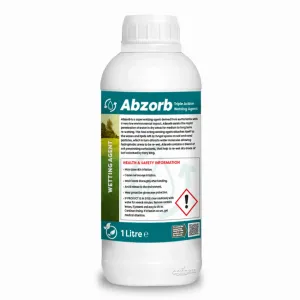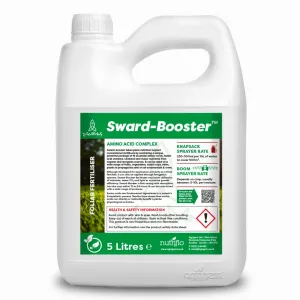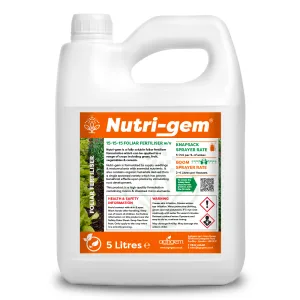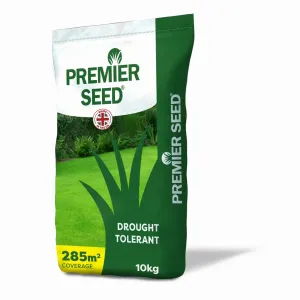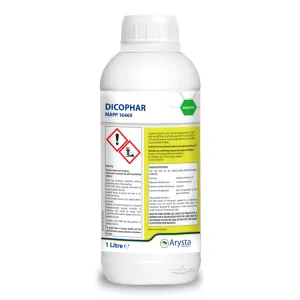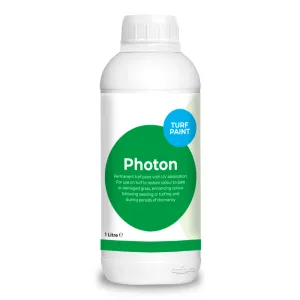Agrigem has been advising homeowners, groundskeepers, lawn companies, local authorities, and landowners on how to grow and sustain healthy grass – for more than 13 years.
Our BASIS, FACTS, NPTC, and BETA qualified experts are in demand - so when you talk to Agrigem, you can trust that our advice is grounded in expertise.
Here’s our guide to lawn restoration following drought, written by our team of technical advisers.
Understand What’s Happening Beneath the Surface
When grass turns brown during a drought, it’s not necessarily dead. Most established lawns go dormant to conserve water, redirecting energy to their root systems. This survival mechanism means that with proper care, your lawn can bounce back once conditions improve.
Bear in mind that newly laid turf or poorly established lawns are more vulnerable and may require more intensive intervention.
1. Start with a Wetting Agent
One of the biggest challenges after a drought is getting water to penetrate the soil. If your lawn is very hard, it’s likely that it has become hydrophobic and will initially repel water, causing your first soaking to run off rather than be absorbed.
Somewhat ironically, hydrophobic soil can contribute to flooding, especially when the hardened surface of soil is oily or waxy. This can happen after prolonged periods of very dry weather, and when the soil contains a high percentage of organic matter.
To get water to penetrate hydrophobic soil, we need to lower the surface tension of the water. A wetting agent does exactly that – allowing the water to be absorbed into the soil, improving its ability to spread and so ‘pulling’ the water down into the soil rather that running off.
Products like Abzorb Triple Action Wetting Agent break down the waxy residues that ‘waterproof’ the soil, allowing water to reach the root zone. They also help retain moisture where it’s needed most, improving soil structure and supporting beneficial microbes.
Tip: Apply Abzorb just before rainfall or irrigation for best results.
2. Feed the Recovery with the Right Fertiliser
Once your lawn begins to green up, it’s time to feed it. Drought-stressed grass needs nutrients to rebuild its structure and regain vitality.
Sward Booster G is a bio-stimulant rich in amino acids and trace elements. It helps grass recover faster by supplying nutrients that the plant would otherwise expend energy producing.
Nutrigem 15-15-15 is a balanced fertiliser ideal for general lawn recovery, promoting root development and leaf growth.
Apply these products when the grass is actively growing and has adequate moisture. Use a knapsack or handheld sprayer for even coverage and always wear appropriate PPE.
3. Overseed with Drought-Tolerant Grass Seed
If your lawn has bare patches or areas that haven’t recovered, overseeding is essential. Choose a seed mix designed for dry conditions.
Premier Drought-Tolerant Grass Seed is specially formulated to thrive in low-water environments. Overseeding helps thicken your lawn, crowd out weeds, and improve resilience against future droughts.
How to Overseed
Rake the area to remove dead grass and loosen the soil.
Spread the seed evenly.
Lightly water daily until germination, then reduce frequency as the grass establishes.
Read our guide to overseeding a lawn for full instructions.
4. Control Weeds That Exploit Drought Conditions
Weeds often thrive during drought because their deep roots can access water that grass cannot. As your lawn recovers, weeds may become more visible and aggressive.
Use a selective herbicide like Dicophar, which targets broadleaf weeds without harming your grass. Apply when weeds are actively growing and follow label instructions carefully.
5. Maintain Moisture with Smart Watering
Once your lawn is on the mend, consistent watering is key. Water deeply but infrequently to encourage deep root growth. Early morning is the best time to water, reducing evaporation and fungal risk.
Continue using a wetting agent monthly during dry spells to improve water efficiency and reduce runoff.
6. Optional: Use Lawn Paint for Instant Green
If you’re preparing for an event or just want your lawn to look better while it recovers, consider using a lawn paint like Photon. It’s a temporary cosmetic fix that gives your grass a healthy green appearance without affecting its recovery.
Restoring a drought-damaged lawn takes time, patience, and the right products. By using Agrigem’s professional-grade solutions, and following advice from our expert technical team, you can bring your lawn back to life and make it more resilient for the future.




